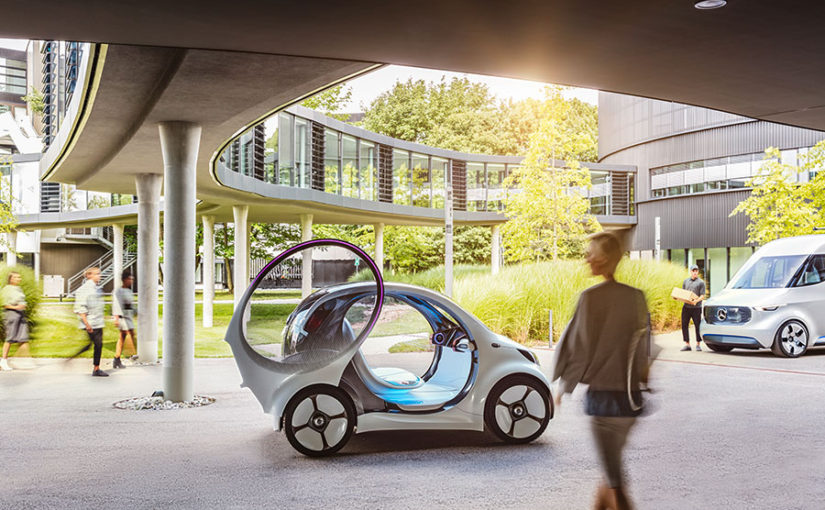
Mercedes to showcase EQ electric and autonomous concept car at Frankfurt motor show
Mercedes will be showing off the latest version of its electric and autonomous concept car, the EQ, at the Frankfurt motor show, IAA 2017.
Mercedes says the smart vision EQ fortwo provides a new vision of urban mobility and individualised, highly flexible, totally efficient local public transport.
The company claims the autonomous concept vehicle picks up its passengers directly from their chosen location.
The auto giant is offering “new individualisation options” to help users to recognise that it is “their” own EQ.
These options include the Black Panel Grille at the front as well as large projection surfaces at the sides, the smart vision EQ fortwo, which all allow “unprecedented individualisation” of the vehicle, ideal for car sharing, says Daimler, parent company of Mercedes.
Freed from the task of driving, the passengers are able to relax in the large interior, adds Daimler.

The show car is the first vehicle from the Daimler Group to take the logical step of dispensing with a steering wheel and pedals.
The smart vision EQ fortwo is also a car in which all of the individual fields of expertise that make up the CASE corporate strategy are combined, allowing users in the city intuitive access to individual mobility.
CASE stands for the strategic pillars of connectivity (Connected), autonomous driving (Autonomous), flexible use (Shared & Services) and electric drive systems (Electric).
With the electrically powered smart vision EQ fortwo, smart is presenting a concept vehicle from the relatively recent product and technology brand EQ at the 2017 Frankfurt International Motor Show.
More than ten new electric cars are set to go into series production at Mercedes-Benz Cars by 2022, from the smart to the large SUV.
Smart took the first step back in 2007 with the smart electric drive and today optionally offers all its models with an electric powertrain.
The company likes to write “smart” in lower case letters, but we’ve written it as “Smart” with a capital S.
Smart CEO Annette Winkler, says: “The Smart vision EQ fortwo is our vision of future urban mobility; it is the most radical car sharing concept car of all: fully autonomous, with maximum communication capabilities, friendly, comprehensively personalisable and, of course, electric.
“With the Smart vision EQ fortwo, we are giving a face to the themes with which Mercedes-Benz Cars describes the vision of future mobility within the CASE strategy.”
Daimler believes transforming “urban traffic” into “city flow” in the future will not only benefit the users but the public at large too, cities and municipal authorities are also a target group for future car sharing concepts from Smart.
Currently, a car2go vehicle is hired somewhere in the world every 1.4 seconds. At present car2go has over 2.6 million customers worldwide – and the number is growing all the time.
The latest studies predict that the number of users of car sharing schemes worldwide will have quintupled by 2025 to 36.7 million.
One of the factors that make car2go so popular is that free-floating car sharing is spontaneous and flexible.
The car does not have to be picked up from or taken back to a specific location. It can be hired and left anywhere in the designated “home” area.
The Smart vision EQ fortwo concept vehicle demonstrates how autonomous driving could make future car sharing even more convenient, simple and economically efficient.
Swarm intelligence and autonomous driving enables the Smart vision EQ fortwo to usher in a new era in car sharing: users do not have to look for the next available car – it will find them and collect the passengers directly from their chosen location.
Swarm intelligence and the resulting predictability of demand will also probably already be nearby, making the journey to pick up a “hire car” a thing of the past.
The interconnected vehicles are always on the road. Utilisation increases and at the same time the amount of traffic and the number of parking spaces required in urban areas are reduced.


